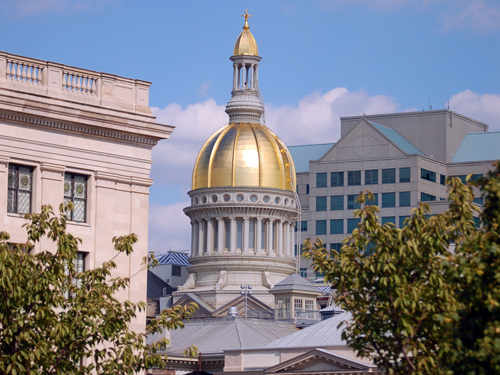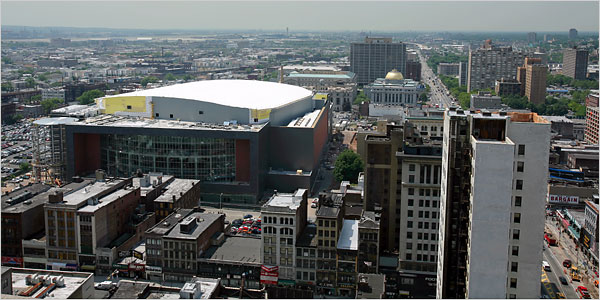New Jersey Future Blog
In Large Metro Areas, It’s Easy Being Green
July 2nd, 2008 by Jay Corbalis
- The top 100 metropolitan areas in the nation emit 2.235 metric tons of carbon per capita from highway transportation and residential energy usage, compared with a national average of 2.60 metric tons.
- Residents of the New York metropolitan area (which includes the New Jersey counties of Bergen, Essex, Hudson, Hunterdon, Middlesex, Monmouth, Morris, Ocean, Passaic, Somerset, Sussex and Union) emit 1.495 metric tons of carbon per capita.
- Residents of the Philadelphia metro area (which includes the New Jersey counties of Burlington, Camden, Gloucester and Salem) emit 2.137 metric tons per capita, which is also below the average for both the top 100 metro areas and the nation as a whole.
New Jersey Leaves Smaller-Than-Average Carbon Footprint
Cities aren’t often thought of as “green” places. Yet according to a recent study by the Brookings Institution, America’s top 100 metro areas do better than the nation as a whole in terms of their carbon footprint. The study, titled Shrinking the Carbon Footprint of Metropolitan America, found that the nation’s 100 largest metropolitan areas emit only 56 percent of the U.S. transportation and residential energy emissions while housing 65 percent of the nation’s population and producing 76 percent of the nation’s economic output.
New Jersey fared well on this nationwide examination. Sixteen of the state’s 21 counties were represented, forming parts of the New York, Philadelphia, Allentown-Bethlehem-Easton and Trenton-Ewing metro areas.
On the transportation side, the New York metro area had the lowest per capita emissions in the nation, while the Philadelphia metro area came in sixth. Only the Trenton-Ewing metro area, which encompasses all of Mercer County, was above the national average for emissions from transportation—due less to Mercer residents’ driving habits than to the county’s relatively low population and high concentration of busy highways, including the New Jersey Turnpike, Route 1, and Interstates 95 and 295.
On the residential energy usage side, cities on the West Coast, where the climate requires less residential heating and cooling, generally did better than their Eastern counterparts. But the New York metro area had the highest ranking east of the Mississippi at 18th, with Trenton-Ewing close behind at 21st.
As a state, New Jersey is in a good position with regard to its carbon footprint. Its relatively high density permits efficiency in heating and cooling that would be impossible elsewhere, and its extensive network of public transportation gives residents a low-carbon option for many trips. Still, much more work will need to be done to meet the state’s ambitious greenhouse gas reduction goals. New Jersey can build on its strengths by continuing to invest in its rail network. The state can also help by continuing to combat sprawl and promote development in the state’s urban areas—which are greener than one might think.
If you have any questions about this issue of Future Facts, please contact Jay Corbalis, Policy Analyst, or Rick Sinding, Senior Communications Consultant.
















